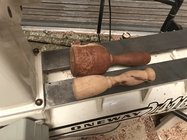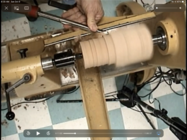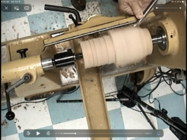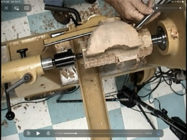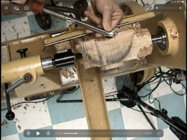I've been asked to do some teaching - basic bowl making - for a local "maker" space. They have 2 Jet lathes (14/40) with most of the trimmings. That means I'll have 2 students. The students will have done some spindle turning and some familiarity with the lathes.
I don't have a lot of time with the students but here's what I'm thinking
I will make the blanks for the students - 6" x 2" cherry or similar.
I'll probably teach them face-plate mounting (I don't think the shop has the worm screws)
I will also create props from each of the major stages to show the students where they are going
Blank,
Blank with tenon,
bowl outside shaped,
bowl inside shaped
bowl without tenon.
Then I'll supervise them as they turn their bowls
I'll sharpen the bowl gouges (I'm going to make laminated instructions on how to sharpen the bowl gouges for the shop so the gouges stay reasonably consistent - they already have the OneWay system)
The lathes are a bit tall (even for me, I'm 5' 7"). Does anyone recommend risers for short students?
Thanks in advance for your insights.
Mark
I don't have a lot of time with the students but here's what I'm thinking
I will make the blanks for the students - 6" x 2" cherry or similar.
I'll probably teach them face-plate mounting (I don't think the shop has the worm screws)
I will also create props from each of the major stages to show the students where they are going
Blank,
Blank with tenon,
bowl outside shaped,
bowl inside shaped
bowl without tenon.
Then I'll supervise them as they turn their bowls
I'll sharpen the bowl gouges (I'm going to make laminated instructions on how to sharpen the bowl gouges for the shop so the gouges stay reasonably consistent - they already have the OneWay system)
The lathes are a bit tall (even for me, I'm 5' 7"). Does anyone recommend risers for short students?
Thanks in advance for your insights.
Mark

